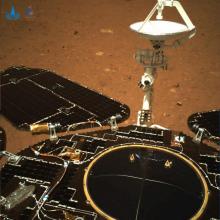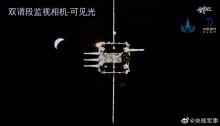Listen to today's episode of StarDate on the web the same day it airs in high-quality streaming audio without any extra ads or announcements. Choose a $8 one-month pass, or listen every day for a year for just $30.
You are here
Moon and Antares
The United States is working to send astronauts back to the Moon — perhaps by the end of this decade. The eventual goal is to establish a long-term base there.
But the U.S. isn’t alone in its lunar ambitions. Russia and China have announced plans to build their own base on the Moon, in the 2030s. Cosmonauts and taikonauts would study the Moon, set up telescopes, and test the technology for exploring beyond the Moon.
As with American plans, the China-Russia base would begin with a series of robotic missions — orbiters, landers, rovers, and others. A couple of them are scheduled for launch later this year.
Those missions would identify the best site for the base. They’d perfect the technology for making pinpoint landings, so everything gets to the right spot. They’d find resources for the base to use — water ice, for example — and test the technology for processing those resources.
According to early reports, construction would start sometime in the next decade, and the base would be operational within a few years.
The two countries are still making plans, and they’re talking to other countries about joining the effort. And the project will require a lot of new tech, including giant rockets. But it’s working toward an ambitious goal: building a base on the Moon.
The Moon climbs into good view by 1:30 or 2 a.m., and is in the south at first light. The bright star Antares — the heart of the scorpion — is just below it.
Script by Damond Benningfield






